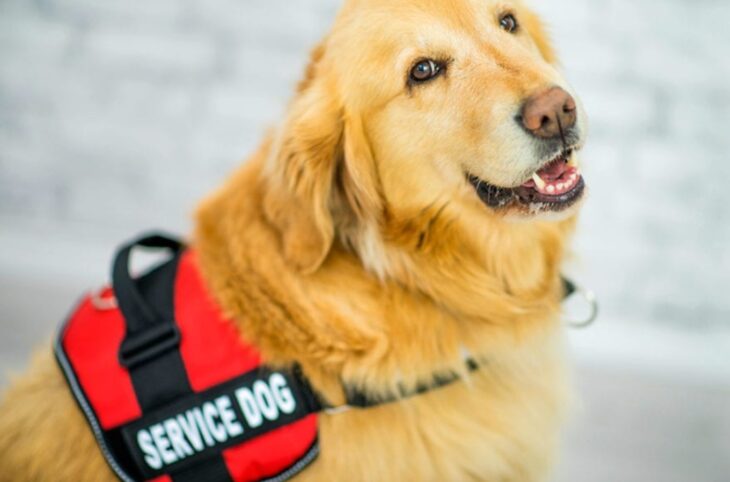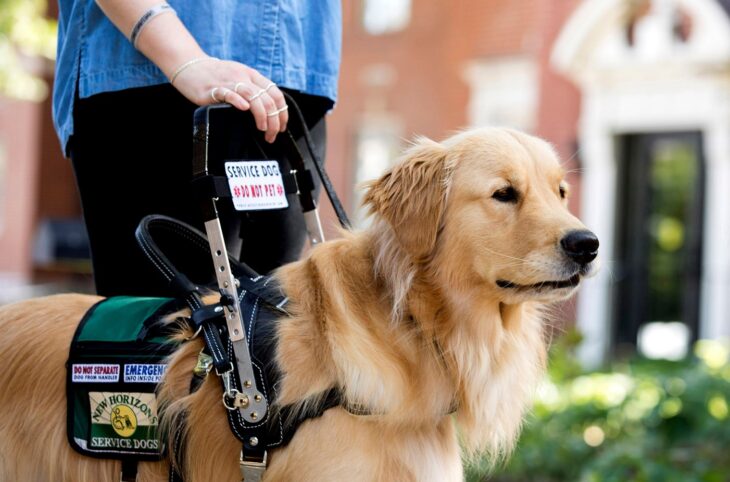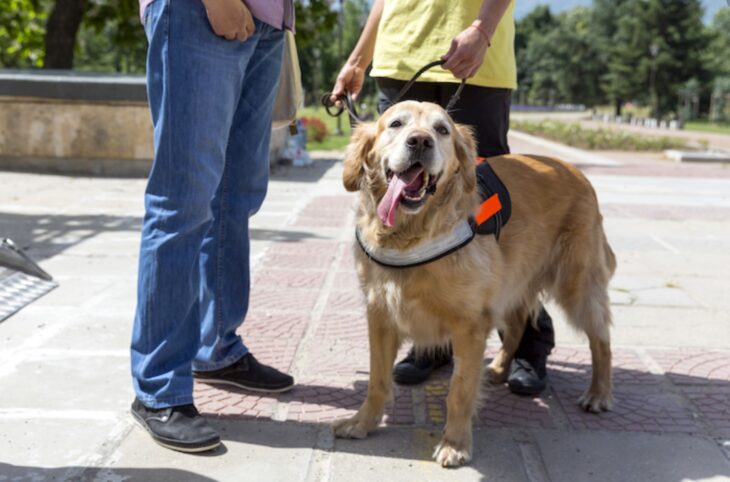Dogs are believed to be the first animals domesticated by people. Initially, they were kept to only help with hunting. However, as time progressed, the bond between the two grew stronger, and today, these canines are thought to be humans’ best friends.
Today, besides companionship and protection, dogs are also known to offer physical and psychological help to people. However, service and emotional support canines are two different types of animals. The Americans with Disabilities Act (ADA) identifies service dogs as creatures trained to perform specific tasks for individuals with a disability.
On the other hand, emotional support canines aren’t trained. However, they’re believed to offer the owner therapeutic benefits through companionship. For your dog to qualify as an emotional support animal (ESA), one has to obtain an ESA letter from a mental health professional. This expert has to be a licensed psychiatrist, therapist, or psychologist. The said document identifies that the handler needs the animal to cope with challenges associated with their emotional or mental disabilities. If you’re looking to certify your canine as an ESA, you can check out helpingfido.com or other helpful sites to understand all that’s required.

Contents
What Do Service Dogs Do?
The ADA requires that the work that a service canine is trained to do should directly relate to its handler’s disability. Therefore, you’ll find guide dogs helping the visually impaired or psychiatric service dogs calming people with mental disabilities like post-traumatic stress disorder (PTSD).
A service canine isn’t considered a pet, and hence, it can be allowed in any place the owner goes to. This includes areas that don’t usually permit animals, like in planes, restaurants, libraries, clinics, and other public spaces. Even so, the handler must control their dog in such locations by having it tethered, harnessed, or leashed. However, sometimes the tools necessary may not be safe for the canine, or the owner’s disability may hinder them from using such equipment. Therefore, at such times, it’s recommended that the handler uses other ways to control their dog, like through signals or words.
As each service animal is trained differently to suit its owner’s needs, they may help their handlers live a more fulfilling life. Also, besides physical support, they could offer companionship and help the individuals improve independence in their daily activities. Other tasks performed by these canines include:

Source: Risen Star Kennel
-
Help in Detecting Allergies
Allergy detection dogs are taught to smell allergens like gluten, fish, and peanuts, which could harm their owners. If the canine detects any of these, they may alert their owners as they’re trained to prevent them from taking or touching these substances.
-
Offer Mobility Assistance
Mobility assistance service dogs could offer physical support to individuals who are disabled. They’re mostly paired with people who have illnesses or conditions such as muscular dystrophy, cerebral palsy, or arthritis, which may hinder a person’s movability.
These service dogs could help their owners to open doors, turn lights on or off, retrieve objects from certain house areas, or pick up fallen items. For wheelchair users, the canine may allow the handler to balance on them to help the individual switch from the movable chair into their beds or bathtubs. Additionally, they might also help to move the chair to the desired position whenever necessary.
Apart from that, some mobility assistance canines are specially taught to pull their handler’s chair. However, the animal must be a strong breed and may also require sufficient obedience training.

Source: UGA Today
-
Helpful for People Living with Autism
For people living with autism, it may sometimes be hard to feel comfortable in social settings. Therefore, an autism service dog could help boost the owner’s confidence. Additionally, it might act as an ice-breaker, enabling them to connect with their peers easily.
Most parents may rely on autism service dogs to keep their autistic children safe. These canines could help to prevent such kids from running away from home. However, if this happens, the service animal might help track them and get them back.
-
Useful for People Who Experience Seizures
For a person with a seizure disorder, service animals can also be helpful. It’s believed that these dogs are well-trained to find help if the owner experiences a seizure. Additionally, if the handler is in an unsafe environment while experiencing convulsions, the canine may help move them to safer locations. After regaining consciousness, the dog may also help bring medicines to them.

What Do Emotional Support Dogs Help With?
Unlike service canines, emotional support dogs don’t require any training. Instead, they’re considered companion animals that support individuals diagnosed with intellectual, mental, or physical disabilities. However, having one is required to hold an ESA letter for you to consider your dog an emotional support creature.
Since the law doesn’t recognize these dogs as trained, they might not be allowed in public places, unlike service animals. However, some restaurants, stores, and other areas may allow ESAs. That being so, you must first check the facility’s policies to avoid any implications.
Some of the purposes of emotional support dogs may be:

Source: USA Service Dog Registration
-
Companionship
For people with mental disabilities, it might sometimes be uncomfortable being in social settings. Therefore, most of them may isolate themselves, which isn’t helpful.
An emotional support dog may offer great companionship to such an individual and might also lessen the feeling of loneliness. Apart from that, these canines might also help the person become more social. For dogs, going for walks as a form of exercise may be beneficial in keeping them healthy and mentally stimulated. During such sessions, the handler is likely to interact with other owners. As a result, they can create connections with them, which may help to improve their social skills.
-
Help Motivate Physical Activity
Physical activity is believed to be effective in reducing anxiety and depression. It’s because, during exercise, the body is said to release good chemicals that might help improve one’s mood. Such include norepinephrine, serotonin, and dopamine. Additionally, by engaging in physical activities, one can get their minds off of any negative thoughts that may be causing anxiety or depression.
Individuals with mental disabilities may sometimes find it challenging to leave their homes. An emotional support dog is likely to give you a purpose to wake up and get out of the house. Also, most domestic canines love walks and various forms of exercises, which could motivate the handler to engage more in such activities.
Over time, the owner may recognize the importance of regular workouts with their dogs. Eventually, they tend to appreciate these sessions and consider these workouts as part of their daily routine. As a result, their mental health may improve as days go by.

Source: Pittsburgh Post-Gazette
-
Help Reduce Stress
Experienced mental professionals advise that having an emotional support dog could be quite helpful for people dealing with stress. It’s believed that interacting with these animals could boost the production of chemicals like serotonin, which may help to reduce stress and generally improve one’s mood.
-
Help Reduce Anxiety
Emotional support dogs could also help to reduce an individual generalized or social anxiety. For example, for most people with mental health disabilities, nervousness may increase when they’re entering an unfamiliar environment.
Therefore, a dog may help reduce this by offering a sense of emotional stability. This is because of its unconditional love and loyalty to the handler, which might help to boost one’s confidence. Furthermore, these two factors may also help the owner withstand situations that could increase anxiety in any setting.

Source: American Kennel Club
Closing Thoughts
Service and emotional support canines are both helpful to their owners. However, your choice will depend on the task you’d want your dog to perform. For instance, a service animal is more suited to offer physical support to persons living with a disability. These are individually trained to perform specific tasks such as guiding the visually impaired and alerting people who are deaf. The canines could also help people living with autism and may also be helpful for people with allergies or seizure disorders.
On the other hand, emotional assistance dogs’ purpose is to give therapeutic support to their handlers through companionship. However, you have to obtain an ESA letter from a certified mental health professional for you to own one. Emotional support canines may help their owners to reduce anxiety and stress. Additionally, they’re good for companionship and could help motivate their handlers to engage in physical activities.
